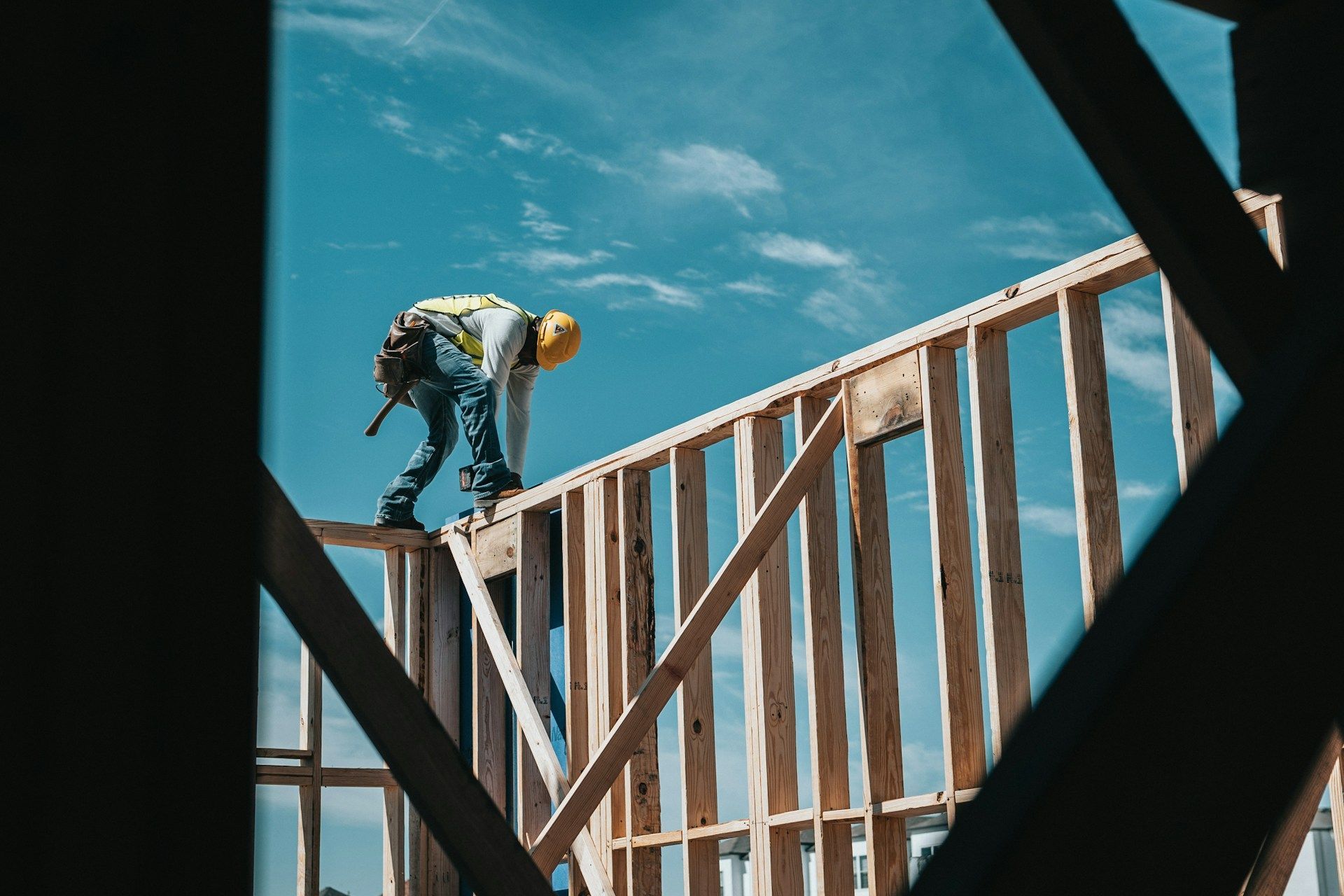Types of Flat Roof Membranes: A Comprehensive Guide to Your Options.
When considering roofing options, understanding the various types of flat roof membranes is essential for ensuring optimal performance and durability. The three primary types of flat roof membranes are EPDM, TPO, and PVC, each offering distinct benefits that cater to different needs and preferences. Selecting the right membrane can significantly impact the longevity and maintenance of your roof.
At Jersey Strong Roofing, we specialize in providing high-quality roofing solutions tailored to your specific requirements. Our team is dedicated to helping you navigate the choices available, ensuring that you understand how each membrane works and what is best for your property. With professional installation and ongoing support, we ensure that your flat roof meets the demands of the New Jersey climate.
A well-chosen roofing membrane not only enhances the performance of your flat roof but also helps prevent costly repairs down the line. Relying on a trusted company like Jersey Strong Roofing guarantees you receive top-notch service, ensuring your investment in a flat roof membrane is sound and beneficial for years to come.
Types of Flat Roof Membranes
Flat roof membranes play a crucial role in protecting your building from water damage and other environmental factors. Understanding the different types can help you choose the right solution for your roofing needs.
EPDM Rubber Membranes
EPDM (ethylene propylene diene monomer) is a popular choice for flat roofs, known for its durability and excellent weather resistance. This synthetic rubber membrane provides a lifespan of 30 years or more when properly installed.
EPDM membranes are available in various thicknesses, typically ranging from 45 to 90 mils. They are lightweight and flexible, allowing for easy installation on different roof shapes. Maintenance is minimal, requiring periodic inspections and repairs.
Moreover, EPDM is resistant to UV radiation, hail, and extreme temperatures. This makes it ideal for diverse climates, providing effective insulation and lowering energy costs. When you choose Jersey Strong Roofing for your EPDM installation, you ensure a reliable roofing solution.
PVC Membranes
Polyvinyl chloride (PVC) membranes are known for their strength and versatility. PVC roofing is highly resistant to chemicals, punctures, and fire, making it suitable for both commercial and residential applications.
These membranes are typically 50 to 80 mils thick and feature a reinforced design, often enhancing stability and durability. PVC membranes reflect sunlight, which can help reduce cooling costs during hot months.
Installation requires heat-welding seams, ensuring a watertight bond that prevents leaks. Regular inspections and maintenance help extend the life of PVC roofs. Trust Jersey Strong Roofing for high-quality PVC membrane installations, designed to withstand the test of time.
TPO Membranes
Thermoplastic polyolefin (TPO) membranes are becoming increasingly popular due to their energy efficiency and cost-effectiveness. These membranes come in various colors, often white, which reflect heat and help maintain cooler indoor temperatures.
TPO membranes typically have a thickness of 45 to 80 mils and feature a single-ply design, making installation straightforward. They are resistant to UV rays, ozone, and microbial growth, enhancing their longevity.
TPO's welded seams create a strong bond, which is essential for preventing leaks. Regular maintenance and inspections will maximize performance. Selecting Jersey Strong Roofing for your TPO roofing means you’ll receive a durable and energy-efficient solution tailored to your needs.
Modified Bitumen Membranes
Modified bitumen membranes consist of asphalt combined with polymers for added flexibility and strength. These membranes come in two primary types: APP (atactic polypropylene) and SBS (styrene-butadiene-styrene), each offering unique benefits.
Modified bitumen is typically installed using a torch-down process or self-adhering methods, which enhance durability and adhesion. The dual-layered structure provides excellent waterproofing protection and resistance to punctures.
Maintenance involves inspection for damage and ensuring seams remain intact. This type of membrane is suitable for various environments, particularly where weather conditions are harsh. For reliable installation and service, Jersey Strong Roofing stands out as your trusted roofing partner in New Jersey.
Installation and Fastening Methods
Understanding the various installation and fastening methods for flat roof membranes is crucial for selecting the right system for your needs. The three primary methods include mechanically fastened systems, fully adhered systems, and ballasted roofing systems. Each method has unique characteristics that affect both the installation process and long-term performance.
Mechanically Fastened Systems
Mechanically fastened systems use fasteners to secure the membrane directly to the substrate. This method is popular due to its speed and reliability.
- Installation Process: A series of metal plates, commonly referred to as screws, are driven into the roofing deck. The membrane is then attached to these plates, creating a robust bond.
- Advantages: This system allows for quick installation and makes easy refurbishment possible. If repairs are needed, it’s simpler to access the membrane.
- Ideal for: Areas with high wind exposure. The mechanical fastening provides additional security against uplift.
Fully Adhered Systems
Fully adhered systems involve the application of adhesive to bond the membrane to the roof deck. This method ensures a continuous layer of insulation and protects against leaks.
- Installation Process: The adhesive is applied either to the substrate or the membrane, allowing for immediate bonding.
- Advantages: This method provides excellent weather resistance and insulation. It minimizes the likelihood of moisture penetration, which is crucial for longevity.
- Considerations: Ensure that the roofing contractor you hire is experienced with this method. Proper application is vital to prevent future issues.
Ballasted Roofing Systems
Ballasted roofing systems utilize gravity to hold the membrane in place, employing heavy materials like gravel or pavers.
- Installation Process: After laying down a slip sheet, the membrane is positioned, and the ballast is placed on top.
- Advantages: This system allows for easy access to the roof for maintenance. It requires minimal attachment, which can reduce labor costs.
- Ideal for: Commercial buildings where weight and accessibility are considerations.
Choosing the right installation method is essential for the lifespan of your flat roof. Partnering with Jersey Strong Roofing ensures professional service tailored to your needs. Our skilled team will assess the best option to maintain the structural integrity of your roof, preventing costly repairs down the line.
Durability and Maintenance
When considering flat roof membranes, two key factors to prioritize are durability and maintenance. These aspects directly influence your roof's long-term performance, especially in varied weather conditions.
Weather Resistance
Flat roof membranes are designed to withstand a variety of weather conditions. They are typically made of materials like EPDM, TPO, and PVC, each offering specific weather-resistant properties.
- EPDM: Excellent resistance to UV rays and extreme temperatures, making it suitable for hot and cold climates.
- TPO: Known for energy efficiency, reflective properties help minimize heat absorption, which is beneficial in sunny regions.
- PVC: Resists chemical exposure and provides solid protection against fire and punctures.
Selecting the right membrane ensures your roof endures severe weather without significant damage.
Life Expectancy
The life expectancy of flat roof membranes varies based on the material and installation quality. Here’s a general overview:
- EPDM: Generally lasts 20-30 years.
- TPO: Offers a lifespan of about 15-25 years.
- PVC: Known for its durability, can last over 30 years.
Regular inspections and timely repairs can extend the life of your roof significantly. When done by trusted professionals, like those at Jersey Strong Roofing, you can ensure longevity and avoid premature replacements.
Maintenance Requirements
Maintenance is crucial for maximizing the lifespan of your flat roof. Each membrane type requires specific upkeep:
- EPDM: Requires periodic inspection for tears or punctures. Cleaning debris helps prolong its efficiency.
- TPO: Regular cleaning is important to maintain its reflective properties and prevent mold or algae growth.
- PVC: While low maintenance, it benefits from routine inspections for seam integrity.
Hiring Jersey Strong Roofing for annual maintenance helps identify potential issues early, saving you from costly repairs down the line. A well-maintained roof not only performs better but also prevents unnecessary expenses in the future.
Roofing Systems for Different Types of Buildings
Different types of buildings require specific roofing systems to meet their unique needs. Understanding these requirements helps ensure longevity and functionality. Here’s a look at how roofing systems differ for commercial and industrial buildings versus residential and institutional buildings.
Commercial and Industrial Buildings
When it comes to commercial and industrial buildings such as warehouses, offices, and supermarkets, flat roofing systems are often preferred. Common materials include EPDM, TPO, and PVC, known for their durability and energy efficiency.
Key Features:
- Durability: Industrial spaces often see heavy foot traffic. Systems like Modified Bitumen provide extra strength.
- Maintenance: Regular inspections and maintenance, provided by experts like Jersey Strong Roofing, are crucial to avoid costly repairs.
- Cost-Effectiveness: A well-maintained commercial roof minimizes long-term expenses.
These buildings often face diverse weather conditions, making reliable roofing systems essential for protection against leaks and environmental damage.
Residential and Institutional Buildings
Residential buildings like apartments and homes, as well as institutional buildings like schools and hospitals, require roofing systems that offer style and functionality. Popular options include asphalt shingles and modified bitumen, which cater to aesthetic and practical concerns.
Key Features:
- Aesthetics: Residential roofs can enhance the beauty of your property. Materials come in various colors and styles.
- Energy Efficiency: TPO and EPDM are also excellent choices for residential roofs due to their reflective qualities, reducing cooling costs.
- Trusted Service: Choosing Jersey Strong Roofing ensures expert installation and maintenance, extending the life of your roof.
For institutions, roof durability is key, especially in hospitals where leaks can lead to serious issues. Proper roofing choice plays a significant role in the overall functionality and comfort of these buildings.
Design and Aesthetics
The choice of flat roof membranes greatly influences the design and aesthetic outcomes of a building. Considerations around architectural flexibility and color options can enhance not only functionality but also visual appeal.
Architectural Flexibility
Flat roofing systems provide excellent architectural flexibility, accommodating various styles and complex roof shapes. You can design spaces that incorporate unique lines and angles, allowing your creative vision to become a reality.
Membranes like TPO, EPDM, and Sarnafil enable seamless integration with your design, enhancing the overall structure. These materials can adapt to both traditional and modern architectural themes. The lightweight nature of these membranes also allows for innovative building techniques, resulting in less strain on the framework.
Choosing quality materials ensures that your design remains intact, providing both aesthetic value and durability. This adaptability is essential for residential and commercial projects alike.
Color and Surface Options
Selecting colors and surface textures for your flat roof can significantly impact the building’s aesthetic appearance. Many membrane options offer a variety of colors that can complement or contrast with the overall exterior design.
Bright colors can enhance energy efficiency by reflecting sunlight, while darker hues can provide a sleek, sophisticated look. Textured surfaces can mimic traditional roofing materials, adding depth and dimension to your structure.
Brands like Jersey Strong Roofing can assist in selecting the best options tailored to your vision, ensuring that your roof not only protects but also enhances the aesthetic of your property. The right choice makes a lasting impression and showcases your commitment to quality design.
Frequently Asked Questions
Flat roof membranes come with various options, each having distinct features. The following questions cover essential aspects such as benefits, comparisons, installation processes, and maintenance considerations.
What are the benefits and drawbacks of EPDM roofing systems?
EPDM roofing systems are known for their durability and resistance to UV radiation. They offer excellent performance in extreme weather conditions, making them suitable for many climates.
However, their black color can absorb heat, impacting energy efficiency in warm regions. Installation is straightforward but may require professional handling for optimal results.
How does TPO roofing compare to other flat roof membrane options?
TPO roofing membranes are valued for their energy efficiency and reflectivity. This means they help keep buildings cooler, which can lead to lower energy bills.
In terms of longevity, TPO competes well with other materials like EPDM and PVC. However, it's crucial to consider factors like installation quality and environmental conditions when making your choice.
What factors should be considered when choosing a flat roof membrane material?
When selecting a flat roof membrane, consider climate, building usage, and budget. Different materials have varying lifespans and maintenance requirements.
Additionally, think about insulation properties and energy efficiency. These elements will determine the long-term performance of your roof.
Can you explain the installation process for PVC roofing membranes?
Installing PVC roofing membranes involves several key steps. First, the surface must be prepared and cleaned to ensure proper adhesion.
Next, the membrane is rolled out and secured, typically using mechanical fasteners or adhesive. Proper sealing at seams is critical to prevent leaks.
What maintenance is required for a flat membrane roof to ensure its longevity?
Regular inspections are essential to identify potential issues early. Look for signs of wear, such as cracks or punctures.
Cleaning debris and ensuring proper drainage can also help extend the life of your flat roof. Schedule yearly maintenance checks to address any potential problems promptly.
How do the costs of different flat roof membrane materials compare?
Costs vary significantly among flat roof materials. EPDM is often more budget-friendly, while TPO and PVC can be higher due to their energy-efficient properties.
When considering cost, also factor in installation and long-term maintenance costs. This will provide a clearer understanding of your overall investment in roofing.
For professional assistance and reliable roofing services, Jersey Strong Roofing is your trusted choice in New Jersey. Our skilled team is dedicated to meeting your commercial and residential roofing needs efficiently.





